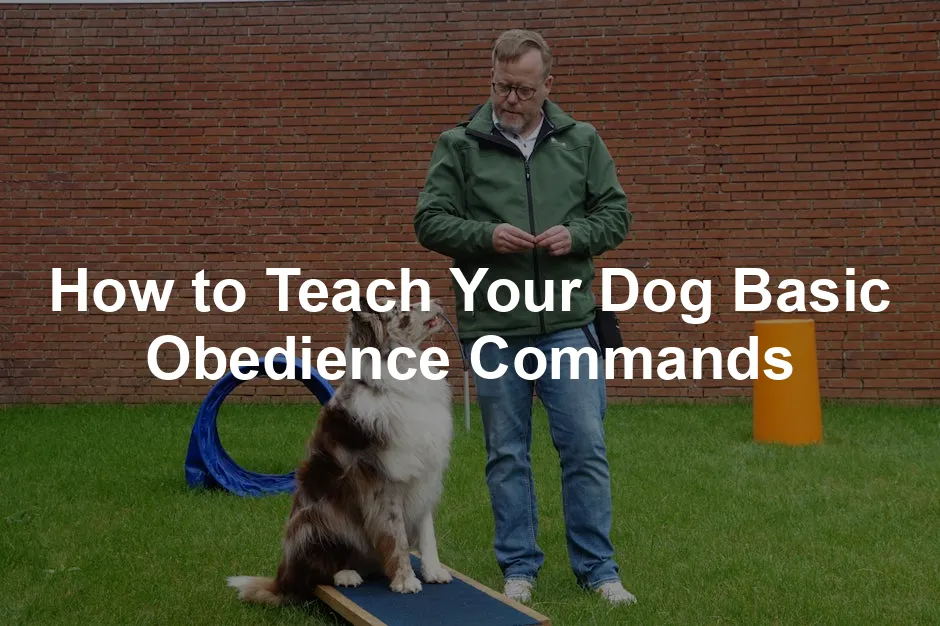How to Teach:
- Begin by having your dog on a leash. Wait until they jump on someone or the furniture.
- Calmly say “off” in a firm but friendly voice.
- Gently guide your dog back to the ground using the leash.
- As soon as their paws touch the floor, reward them with a treat and praise.
- Repeat this process multiple times, gradually increasing the difficulty.
- Practice in different environments with various distractions to reinforce the command.
- Always reward compliance, making sure your dog associates the command with positive outcomes.
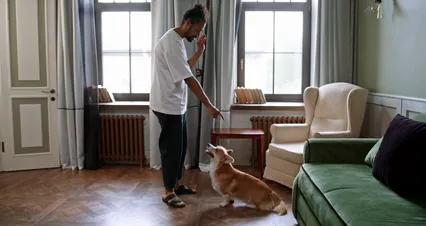
Additional Commands
If space allows, consider teaching these useful commands:
- Heel: This command ensures your dog walks politely beside you. Use treats to encourage them to stay close while you walk.
- Wait: Teaching your dog to “wait” can prevent them from rushing out doors or into dangerous situations. Start with short waits and gradually increase the duration.
- Drop It: This command is a lifesaver for retrieving items your dog shouldn’t have. Use a toy and treat to encourage them to release whatever they’re holding.
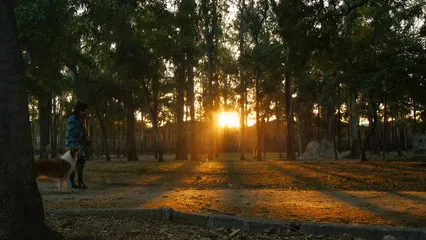
Common Training Mistakes to Avoid
Training your dog can be a challenging yet rewarding experience. However, common pitfalls can derail your progress. One of the biggest mistakes is inconsistency. If you use different commands or signals, confusion is inevitable. Stick to the same commands consistently. This clarity helps your dog learn faster.
Negative reinforcement is another no-no. Yelling or using harsh corrections can harm your bond with your dog. Instead, focus on positive reinforcement. Reward good behavior immediately with treats, praise, or playtime. This encourages your dog to repeat those behaviors.
Another mistake is impatience. Training takes time, and every dog learns at their own pace. Set realistic expectations and celebrate small victories. If your dog struggles, break the command into smaller steps.
Lastly, avoid lengthy training sessions. Dogs have short attention spans. Keep sessions brief, around 5-10 minutes, and ensure they end on a positive note. This keeps your dog engaged and eager for more training.
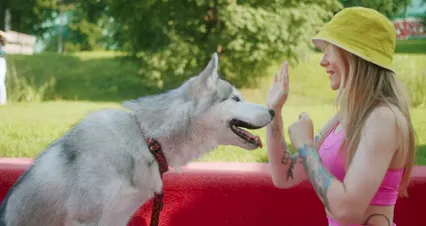
By steering clear of these mistakes, you’ll create a more effective and enjoyable training experience for both you and your furry friend. Remember, training is about building a strong bond based on trust and understanding!
Conclusion
In this article, we’ve covered the essentials of teaching your dog basic obedience commands. Starting with commands like “sit,” “stay,” and “come” lays a solid foundation for a well-behaved dog. Remember, consistent training is key. It not only helps your dog understand your expectations but also strengthens the bond between you two.
Building a positive relationship with your furry friend is crucial. Use positive reinforcement, like treats and praise, to motivate them during training. Keep sessions short and enjoyable, and always end on a high note.
And don’t forget to equip yourself with a dog training leash to ensure you have good control during training sessions!
Patience is your best friend. Each dog learns at their own pace, so don’t rush the process. Enjoy the journey! Celebrate small victories, and soon you’ll have a well-mannered companion by your side. Happy training!
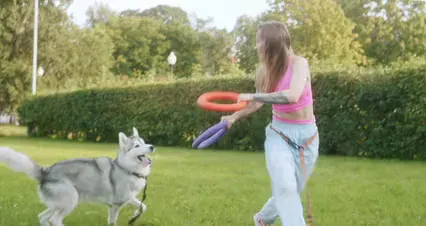
FAQs
How long should training sessions be?
Training sessions should typically last between 5 to 10 minutes. Puppies have short attention spans, so keeping sessions brief helps maintain their focus. Aim for multiple short sessions throughout the day rather than one long session. This approach keeps your dog engaged and eager to learn.
What should I do if my dog doesn’t respond to commands?
If your dog struggles to respond, try changing your approach. First, assess the environment. Distractions can hinder focus. Move to a quieter space. If that doesn’t help, check your command’s consistency. Ensure you’re using the same cues every time. Lastly, use high-value treats to encourage compliance.
Can older dogs learn commands?
Absolutely! Older dogs can learn new commands, though it may take a bit longer. Their previous experiences might make them more resistant to new training methods, so patience is essential. Keep training sessions engaging and rewarding to motivate your older furry friend.
How often should I train my dog?
Training should be a regular part of your dog’s routine. Aim for daily sessions, mixing in practice of new commands with reinforcement of already learned ones. Consistency helps solidify their learning. Practicing several times a day, even briefly, can lead to great progress.
What are high-value treats?
High-value treats are special rewards that dogs find particularly enticing. These can include small pieces of cooked chicken, cheese, or store-bought treats that your dog loves. Using high-value treats during training sessions helps keep your dog’s interest and motivates them to follow commands effectively.
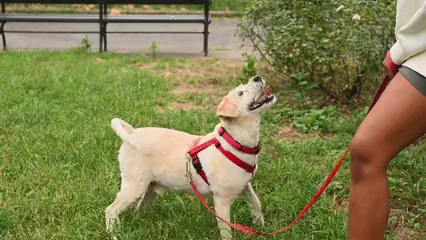
Please let us know what you think about our content by leaving a comment down below!
Thank you for reading till here 🙂
For your dog’s safety and comfort, consider investing in a dog safety harness. It provides security during walks and helps keep your pup safe while you train!
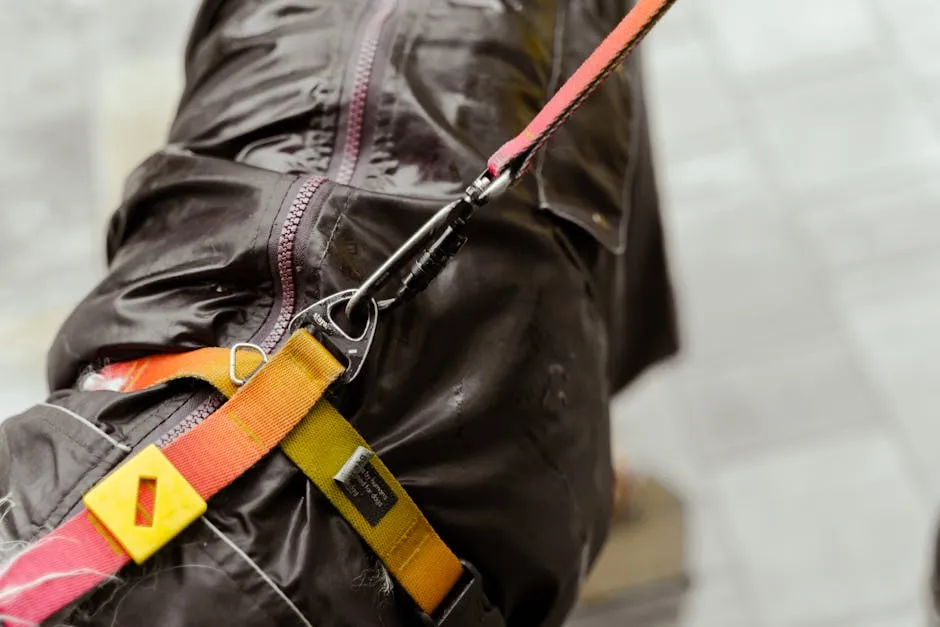
Additionally, a dog grooming kit will keep your furry friend looking sharp and feeling comfortable as they learn their commands!
All images from Pexels
How to Teach:
- Start with two treats: one low-value and one high-value. Show your dog the low-value treat while keeping the high-value treat hidden.
- When they reach for the low-value treat, say “leave it” and close your hand around it.
- When they ignore it, reward them with the high-value treat.
- Gradually increase the challenge by placing the low-value treat on the floor.
- Always reward them for ignoring the temptation!
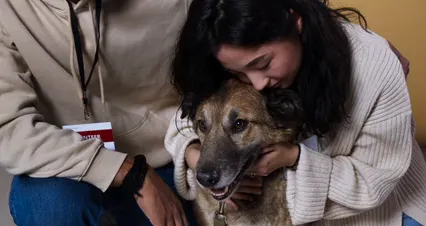
6. Off
Why It’s Important: Teaching your dog the “off” command is essential for setting boundaries. It helps prevent unwanted jumping on people or furniture. Imagine your guests arriving, and your pup decides to leap into their arms like a furry acrobat! Not ideal, right? This command ensures your dog understands when it’s time to keep all four paws on the ground. It promotes good manners and helps your dog learn their place in social situations.
How to Teach:
- Begin by having your dog on a leash. Wait until they jump on someone or the furniture.
- Calmly say “off” in a firm but friendly voice.
- Gently guide your dog back to the ground using the leash.
- As soon as their paws touch the floor, reward them with a treat and praise.
- Repeat this process multiple times, gradually increasing the difficulty.
- Practice in different environments with various distractions to reinforce the command.
- Always reward compliance, making sure your dog associates the command with positive outcomes.

Additional Commands
If space allows, consider teaching these useful commands:
- Heel: This command ensures your dog walks politely beside you. Use treats to encourage them to stay close while you walk.
- Wait: Teaching your dog to “wait” can prevent them from rushing out doors or into dangerous situations. Start with short waits and gradually increase the duration.
- Drop It: This command is a lifesaver for retrieving items your dog shouldn’t have. Use a toy and treat to encourage them to release whatever they’re holding.

Common Training Mistakes to Avoid
Training your dog can be a challenging yet rewarding experience. However, common pitfalls can derail your progress. One of the biggest mistakes is inconsistency. If you use different commands or signals, confusion is inevitable. Stick to the same commands consistently. This clarity helps your dog learn faster.
Negative reinforcement is another no-no. Yelling or using harsh corrections can harm your bond with your dog. Instead, focus on positive reinforcement. Reward good behavior immediately with treats, praise, or playtime. This encourages your dog to repeat those behaviors.
Another mistake is impatience. Training takes time, and every dog learns at their own pace. Set realistic expectations and celebrate small victories. If your dog struggles, break the command into smaller steps.
Lastly, avoid lengthy training sessions. Dogs have short attention spans. Keep sessions brief, around 5-10 minutes, and ensure they end on a positive note. This keeps your dog engaged and eager for more training.

By steering clear of these mistakes, you’ll create a more effective and enjoyable training experience for both you and your furry friend. Remember, training is about building a strong bond based on trust and understanding!
Conclusion
In this article, we’ve covered the essentials of teaching your dog basic obedience commands. Starting with commands like “sit,” “stay,” and “come” lays a solid foundation for a well-behaved dog. Remember, consistent training is key. It not only helps your dog understand your expectations but also strengthens the bond between you two.
Building a positive relationship with your furry friend is crucial. Use positive reinforcement, like treats and praise, to motivate them during training. Keep sessions short and enjoyable, and always end on a high note.
And don’t forget to equip yourself with a dog training leash to ensure you have good control during training sessions!
Patience is your best friend. Each dog learns at their own pace, so don’t rush the process. Enjoy the journey! Celebrate small victories, and soon you’ll have a well-mannered companion by your side. Happy training!

FAQs

Please let us know what you think about our content by leaving a comment down below!
Thank you for reading till here 🙂
For your dog’s safety and comfort, consider investing in a dog safety harness. It provides security during walks and helps keep your pup safe while you train!

Additionally, a dog grooming kit will keep your furry friend looking sharp and feeling comfortable as they learn their commands!
All images from Pexels
How to Teach:
- Start with your dog in a sitting position. Hold a treat near their nose.
- Slowly lower the treat towards the floor. As they follow the treat, they’ll naturally lie down.
- Once they’re down, say “down” and reward them.
- Repeat this process, gradually using just the verbal cue.
- Keep sessions short and fun, rewarding every success!

5. Leave It
Why It’s Important: The “leave it” command is essential for preventing your dog from picking up harmful items or engaging in undesirable behaviors. This command can save your dog from choking hazards or eating something toxic. It’s a must for any responsible dog owner.
How to Teach:
- Start with two treats: one low-value and one high-value. Show your dog the low-value treat while keeping the high-value treat hidden.
- When they reach for the low-value treat, say “leave it” and close your hand around it.
- When they ignore it, reward them with the high-value treat.
- Gradually increase the challenge by placing the low-value treat on the floor.
- Always reward them for ignoring the temptation!

6. Off
Why It’s Important: Teaching your dog the “off” command is essential for setting boundaries. It helps prevent unwanted jumping on people or furniture. Imagine your guests arriving, and your pup decides to leap into their arms like a furry acrobat! Not ideal, right? This command ensures your dog understands when it’s time to keep all four paws on the ground. It promotes good manners and helps your dog learn their place in social situations.
How to Teach:
- Begin by having your dog on a leash. Wait until they jump on someone or the furniture.
- Calmly say “off” in a firm but friendly voice.
- Gently guide your dog back to the ground using the leash.
- As soon as their paws touch the floor, reward them with a treat and praise.
- Repeat this process multiple times, gradually increasing the difficulty.
- Practice in different environments with various distractions to reinforce the command.
- Always reward compliance, making sure your dog associates the command with positive outcomes.

Additional Commands
If space allows, consider teaching these useful commands:
- Heel: This command ensures your dog walks politely beside you. Use treats to encourage them to stay close while you walk.
- Wait: Teaching your dog to “wait” can prevent them from rushing out doors or into dangerous situations. Start with short waits and gradually increase the duration.
- Drop It: This command is a lifesaver for retrieving items your dog shouldn’t have. Use a toy and treat to encourage them to release whatever they’re holding.

Common Training Mistakes to Avoid
Training your dog can be a challenging yet rewarding experience. However, common pitfalls can derail your progress. One of the biggest mistakes is inconsistency. If you use different commands or signals, confusion is inevitable. Stick to the same commands consistently. This clarity helps your dog learn faster.
Negative reinforcement is another no-no. Yelling or using harsh corrections can harm your bond with your dog. Instead, focus on positive reinforcement. Reward good behavior immediately with treats, praise, or playtime. This encourages your dog to repeat those behaviors.
Another mistake is impatience. Training takes time, and every dog learns at their own pace. Set realistic expectations and celebrate small victories. If your dog struggles, break the command into smaller steps.
Lastly, avoid lengthy training sessions. Dogs have short attention spans. Keep sessions brief, around 5-10 minutes, and ensure they end on a positive note. This keeps your dog engaged and eager for more training.

By steering clear of these mistakes, you’ll create a more effective and enjoyable training experience for both you and your furry friend. Remember, training is about building a strong bond based on trust and understanding!
Conclusion
In this article, we’ve covered the essentials of teaching your dog basic obedience commands. Starting with commands like “sit,” “stay,” and “come” lays a solid foundation for a well-behaved dog. Remember, consistent training is key. It not only helps your dog understand your expectations but also strengthens the bond between you two.
Building a positive relationship with your furry friend is crucial. Use positive reinforcement, like treats and praise, to motivate them during training. Keep sessions short and enjoyable, and always end on a high note.
And don’t forget to equip yourself with a dog training leash to ensure you have good control during training sessions!
Patience is your best friend. Each dog learns at their own pace, so don’t rush the process. Enjoy the journey! Celebrate small victories, and soon you’ll have a well-mannered companion by your side. Happy training!

FAQs

Please let us know what you think about our content by leaving a comment down below!
Thank you for reading till here 🙂
For your dog’s safety and comfort, consider investing in a dog safety harness. It provides security during walks and helps keep your pup safe while you train!

Additionally, a dog grooming kit will keep your furry friend looking sharp and feeling comfortable as they learn their commands!
All images from Pexels
How to Teach:
- Start indoors with a leash on your dog. Say “come” enthusiastically while gently pulling the leash toward you.
- When they reach you, reward them with treats and praise.
- Gradually increase distance and distractions as they learn.
- Practice this command in different areas, always keeping it positive.
- Never call your dog to punish them; this creates a negative association.
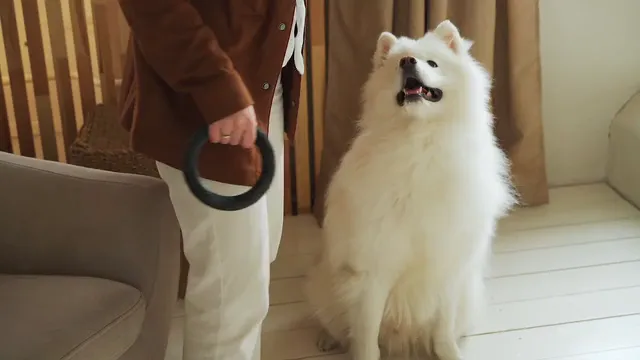
4. Down
Why It’s Important: Teaching your dog to “down” is all about promoting calmness. This command helps settle an excitable pup, making it easier for them to relax in various situations. A well-timed down can diffuse tension in a busy environment or help your dog focus.
How to Teach:
- Start with your dog in a sitting position. Hold a treat near their nose.
- Slowly lower the treat towards the floor. As they follow the treat, they’ll naturally lie down.
- Once they’re down, say “down” and reward them.
- Repeat this process, gradually using just the verbal cue.
- Keep sessions short and fun, rewarding every success!

5. Leave It
Why It’s Important: The “leave it” command is essential for preventing your dog from picking up harmful items or engaging in undesirable behaviors. This command can save your dog from choking hazards or eating something toxic. It’s a must for any responsible dog owner.
How to Teach:
- Start with two treats: one low-value and one high-value. Show your dog the low-value treat while keeping the high-value treat hidden.
- When they reach for the low-value treat, say “leave it” and close your hand around it.
- When they ignore it, reward them with the high-value treat.
- Gradually increase the challenge by placing the low-value treat on the floor.
- Always reward them for ignoring the temptation!

6. Off
Why It’s Important: Teaching your dog the “off” command is essential for setting boundaries. It helps prevent unwanted jumping on people or furniture. Imagine your guests arriving, and your pup decides to leap into their arms like a furry acrobat! Not ideal, right? This command ensures your dog understands when it’s time to keep all four paws on the ground. It promotes good manners and helps your dog learn their place in social situations.
How to Teach:
- Begin by having your dog on a leash. Wait until they jump on someone or the furniture.
- Calmly say “off” in a firm but friendly voice.
- Gently guide your dog back to the ground using the leash.
- As soon as their paws touch the floor, reward them with a treat and praise.
- Repeat this process multiple times, gradually increasing the difficulty.
- Practice in different environments with various distractions to reinforce the command.
- Always reward compliance, making sure your dog associates the command with positive outcomes.

Additional Commands
If space allows, consider teaching these useful commands:
- Heel: This command ensures your dog walks politely beside you. Use treats to encourage them to stay close while you walk.
- Wait: Teaching your dog to “wait” can prevent them from rushing out doors or into dangerous situations. Start with short waits and gradually increase the duration.
- Drop It: This command is a lifesaver for retrieving items your dog shouldn’t have. Use a toy and treat to encourage them to release whatever they’re holding.

Common Training Mistakes to Avoid
Training your dog can be a challenging yet rewarding experience. However, common pitfalls can derail your progress. One of the biggest mistakes is inconsistency. If you use different commands or signals, confusion is inevitable. Stick to the same commands consistently. This clarity helps your dog learn faster.
Negative reinforcement is another no-no. Yelling or using harsh corrections can harm your bond with your dog. Instead, focus on positive reinforcement. Reward good behavior immediately with treats, praise, or playtime. This encourages your dog to repeat those behaviors.
Another mistake is impatience. Training takes time, and every dog learns at their own pace. Set realistic expectations and celebrate small victories. If your dog struggles, break the command into smaller steps.
Lastly, avoid lengthy training sessions. Dogs have short attention spans. Keep sessions brief, around 5-10 minutes, and ensure they end on a positive note. This keeps your dog engaged and eager for more training.

By steering clear of these mistakes, you’ll create a more effective and enjoyable training experience for both you and your furry friend. Remember, training is about building a strong bond based on trust and understanding!
Conclusion
In this article, we’ve covered the essentials of teaching your dog basic obedience commands. Starting with commands like “sit,” “stay,” and “come” lays a solid foundation for a well-behaved dog. Remember, consistent training is key. It not only helps your dog understand your expectations but also strengthens the bond between you two.
Building a positive relationship with your furry friend is crucial. Use positive reinforcement, like treats and praise, to motivate them during training. Keep sessions short and enjoyable, and always end on a high note.
And don’t forget to equip yourself with a dog training leash to ensure you have good control during training sessions!
Patience is your best friend. Each dog learns at their own pace, so don’t rush the process. Enjoy the journey! Celebrate small victories, and soon you’ll have a well-mannered companion by your side. Happy training!

FAQs

Please let us know what you think about our content by leaving a comment down below!
Thank you for reading till here 🙂
For your dog’s safety and comfort, consider investing in a dog safety harness. It provides security during walks and helps keep your pup safe while you train!

Additionally, a dog grooming kit will keep your furry friend looking sharp and feeling comfortable as they learn their commands!
All images from Pexels
How to Teach:
- Ask your dog to sit. Use a calm voice and a hand signal with your palm facing them.
- Step back and say “stay.” If they hold their position, return and reward them.
- Start with short distances and durations, gradually increasing as they improve.
- If they break the stay, calmly guide them back to the position and try again.
- Always reward success and make it a positive experience.
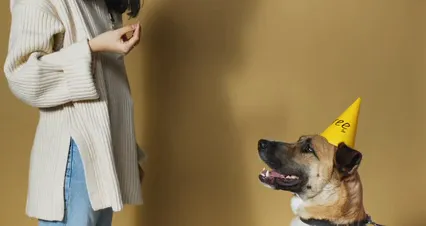
3. Come
Why It’s Important: The “come” command can be a lifesaver. It’s your tool for calling your dog back to you, especially in risky situations. Whether they’re chasing a squirrel or wandering too close to a road, a reliable recall can prevent accidents and keep your furry friend safe.
How to Teach:
- Start indoors with a leash on your dog. Say “come” enthusiastically while gently pulling the leash toward you.
- When they reach you, reward them with treats and praise.
- Gradually increase distance and distractions as they learn.
- Practice this command in different areas, always keeping it positive.
- Never call your dog to punish them; this creates a negative association.

4. Down
Why It’s Important: Teaching your dog to “down” is all about promoting calmness. This command helps settle an excitable pup, making it easier for them to relax in various situations. A well-timed down can diffuse tension in a busy environment or help your dog focus.
How to Teach:
- Start with your dog in a sitting position. Hold a treat near their nose.
- Slowly lower the treat towards the floor. As they follow the treat, they’ll naturally lie down.
- Once they’re down, say “down” and reward them.
- Repeat this process, gradually using just the verbal cue.
- Keep sessions short and fun, rewarding every success!

5. Leave It
Why It’s Important: The “leave it” command is essential for preventing your dog from picking up harmful items or engaging in undesirable behaviors. This command can save your dog from choking hazards or eating something toxic. It’s a must for any responsible dog owner.
How to Teach:
- Start with two treats: one low-value and one high-value. Show your dog the low-value treat while keeping the high-value treat hidden.
- When they reach for the low-value treat, say “leave it” and close your hand around it.
- When they ignore it, reward them with the high-value treat.
- Gradually increase the challenge by placing the low-value treat on the floor.
- Always reward them for ignoring the temptation!

6. Off
Why It’s Important: Teaching your dog the “off” command is essential for setting boundaries. It helps prevent unwanted jumping on people or furniture. Imagine your guests arriving, and your pup decides to leap into their arms like a furry acrobat! Not ideal, right? This command ensures your dog understands when it’s time to keep all four paws on the ground. It promotes good manners and helps your dog learn their place in social situations.
How to Teach:
- Begin by having your dog on a leash. Wait until they jump on someone or the furniture.
- Calmly say “off” in a firm but friendly voice.
- Gently guide your dog back to the ground using the leash.
- As soon as their paws touch the floor, reward them with a treat and praise.
- Repeat this process multiple times, gradually increasing the difficulty.
- Practice in different environments with various distractions to reinforce the command.
- Always reward compliance, making sure your dog associates the command with positive outcomes.

Additional Commands
If space allows, consider teaching these useful commands:
- Heel: This command ensures your dog walks politely beside you. Use treats to encourage them to stay close while you walk.
- Wait: Teaching your dog to “wait” can prevent them from rushing out doors or into dangerous situations. Start with short waits and gradually increase the duration.
- Drop It: This command is a lifesaver for retrieving items your dog shouldn’t have. Use a toy and treat to encourage them to release whatever they’re holding.

Common Training Mistakes to Avoid
Training your dog can be a challenging yet rewarding experience. However, common pitfalls can derail your progress. One of the biggest mistakes is inconsistency. If you use different commands or signals, confusion is inevitable. Stick to the same commands consistently. This clarity helps your dog learn faster.
Negative reinforcement is another no-no. Yelling or using harsh corrections can harm your bond with your dog. Instead, focus on positive reinforcement. Reward good behavior immediately with treats, praise, or playtime. This encourages your dog to repeat those behaviors.
Another mistake is impatience. Training takes time, and every dog learns at their own pace. Set realistic expectations and celebrate small victories. If your dog struggles, break the command into smaller steps.
Lastly, avoid lengthy training sessions. Dogs have short attention spans. Keep sessions brief, around 5-10 minutes, and ensure they end on a positive note. This keeps your dog engaged and eager for more training.

By steering clear of these mistakes, you’ll create a more effective and enjoyable training experience for both you and your furry friend. Remember, training is about building a strong bond based on trust and understanding!
Conclusion
In this article, we’ve covered the essentials of teaching your dog basic obedience commands. Starting with commands like “sit,” “stay,” and “come” lays a solid foundation for a well-behaved dog. Remember, consistent training is key. It not only helps your dog understand your expectations but also strengthens the bond between you two.
Building a positive relationship with your furry friend is crucial. Use positive reinforcement, like treats and praise, to motivate them during training. Keep sessions short and enjoyable, and always end on a high note.
And don’t forget to equip yourself with a dog training leash to ensure you have good control during training sessions!
Patience is your best friend. Each dog learns at their own pace, so don’t rush the process. Enjoy the journey! Celebrate small victories, and soon you’ll have a well-mannered companion by your side. Happy training!

FAQs

Please let us know what you think about our content by leaving a comment down below!
Thank you for reading till here 🙂
For your dog’s safety and comfort, consider investing in a dog safety harness. It provides security during walks and helps keep your pup safe while you train!

Additionally, a dog grooming kit will keep your furry friend looking sharp and feeling comfortable as they learn their commands!
All images from Pexels
How to Teach:
- Begin with your dog standing. Hold a treat close to their nose.
- Slowly lift the treat above their head, encouraging them to look up. Their bottom will naturally lower.
- As soon as their rear hits the ground, say “sit” and reward them with the treat.
- Repeat this process, gradually introducing the command before the action.
- Practice in short sessions, always rewarding success. Consistency is key!
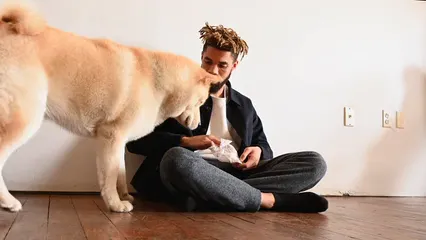
2. Stay
Why It’s Important: The “stay” command is crucial for your dog’s safety. It ensures they remain put during potentially dangerous situations, like when the front door opens or while you prepare their food. A well-trained stay can also help during outings, preventing them from running into traffic.
How to Teach:
- Ask your dog to sit. Use a calm voice and a hand signal with your palm facing them.
- Step back and say “stay.” If they hold their position, return and reward them.
- Start with short distances and durations, gradually increasing as they improve.
- If they break the stay, calmly guide them back to the position and try again.
- Always reward success and make it a positive experience.

3. Come
Why It’s Important: The “come” command can be a lifesaver. It’s your tool for calling your dog back to you, especially in risky situations. Whether they’re chasing a squirrel or wandering too close to a road, a reliable recall can prevent accidents and keep your furry friend safe.
How to Teach:
- Start indoors with a leash on your dog. Say “come” enthusiastically while gently pulling the leash toward you.
- When they reach you, reward them with treats and praise.
- Gradually increase distance and distractions as they learn.
- Practice this command in different areas, always keeping it positive.
- Never call your dog to punish them; this creates a negative association.

4. Down
Why It’s Important: Teaching your dog to “down” is all about promoting calmness. This command helps settle an excitable pup, making it easier for them to relax in various situations. A well-timed down can diffuse tension in a busy environment or help your dog focus.
How to Teach:
- Start with your dog in a sitting position. Hold a treat near their nose.
- Slowly lower the treat towards the floor. As they follow the treat, they’ll naturally lie down.
- Once they’re down, say “down” and reward them.
- Repeat this process, gradually using just the verbal cue.
- Keep sessions short and fun, rewarding every success!

5. Leave It
Why It’s Important: The “leave it” command is essential for preventing your dog from picking up harmful items or engaging in undesirable behaviors. This command can save your dog from choking hazards or eating something toxic. It’s a must for any responsible dog owner.
How to Teach:
- Start with two treats: one low-value and one high-value. Show your dog the low-value treat while keeping the high-value treat hidden.
- When they reach for the low-value treat, say “leave it” and close your hand around it.
- When they ignore it, reward them with the high-value treat.
- Gradually increase the challenge by placing the low-value treat on the floor.
- Always reward them for ignoring the temptation!

6. Off
Why It’s Important: Teaching your dog the “off” command is essential for setting boundaries. It helps prevent unwanted jumping on people or furniture. Imagine your guests arriving, and your pup decides to leap into their arms like a furry acrobat! Not ideal, right? This command ensures your dog understands when it’s time to keep all four paws on the ground. It promotes good manners and helps your dog learn their place in social situations.
How to Teach:
- Begin by having your dog on a leash. Wait until they jump on someone or the furniture.
- Calmly say “off” in a firm but friendly voice.
- Gently guide your dog back to the ground using the leash.
- As soon as their paws touch the floor, reward them with a treat and praise.
- Repeat this process multiple times, gradually increasing the difficulty.
- Practice in different environments with various distractions to reinforce the command.
- Always reward compliance, making sure your dog associates the command with positive outcomes.

Additional Commands
If space allows, consider teaching these useful commands:
- Heel: This command ensures your dog walks politely beside you. Use treats to encourage them to stay close while you walk.
- Wait: Teaching your dog to “wait” can prevent them from rushing out doors or into dangerous situations. Start with short waits and gradually increase the duration.
- Drop It: This command is a lifesaver for retrieving items your dog shouldn’t have. Use a toy and treat to encourage them to release whatever they’re holding.

Common Training Mistakes to Avoid
Training your dog can be a challenging yet rewarding experience. However, common pitfalls can derail your progress. One of the biggest mistakes is inconsistency. If you use different commands or signals, confusion is inevitable. Stick to the same commands consistently. This clarity helps your dog learn faster.
Negative reinforcement is another no-no. Yelling or using harsh corrections can harm your bond with your dog. Instead, focus on positive reinforcement. Reward good behavior immediately with treats, praise, or playtime. This encourages your dog to repeat those behaviors.
Another mistake is impatience. Training takes time, and every dog learns at their own pace. Set realistic expectations and celebrate small victories. If your dog struggles, break the command into smaller steps.
Lastly, avoid lengthy training sessions. Dogs have short attention spans. Keep sessions brief, around 5-10 minutes, and ensure they end on a positive note. This keeps your dog engaged and eager for more training.

By steering clear of these mistakes, you’ll create a more effective and enjoyable training experience for both you and your furry friend. Remember, training is about building a strong bond based on trust and understanding!
Conclusion
In this article, we’ve covered the essentials of teaching your dog basic obedience commands. Starting with commands like “sit,” “stay,” and “come” lays a solid foundation for a well-behaved dog. Remember, consistent training is key. It not only helps your dog understand your expectations but also strengthens the bond between you two.
Building a positive relationship with your furry friend is crucial. Use positive reinforcement, like treats and praise, to motivate them during training. Keep sessions short and enjoyable, and always end on a high note.
And don’t forget to equip yourself with a dog training leash to ensure you have good control during training sessions!
Patience is your best friend. Each dog learns at their own pace, so don’t rush the process. Enjoy the journey! Celebrate small victories, and soon you’ll have a well-mannered companion by your side. Happy training!

FAQs

Please let us know what you think about our content by leaving a comment down below!
Thank you for reading till here 🙂
For your dog’s safety and comfort, consider investing in a dog safety harness. It provides security during walks and helps keep your pup safe while you train!

Additionally, a dog grooming kit will keep your furry friend looking sharp and feeling comfortable as they learn their commands!
All images from Pexels
Introduction
Teaching your dog basic obedience commands is crucial. It enhances your dog’s behavior, safety, and your bond with them. Imagine your furry friend sitting patiently instead of jumping on guests. It’s a win-win!
A well-trained dog knows what’s expected of them. This knowledge leads to fewer misunderstandings and mischief. But the benefits don’t stop there. Effective training can save your dog’s life in critical situations. For instance, the “come” command can prevent them from running into traffic.
In this article, we’ll cover effective training methods, essential commands every dog should know, and tips for successful training. Say goodbye to puppy chaos and hello to a well-behaved companion!
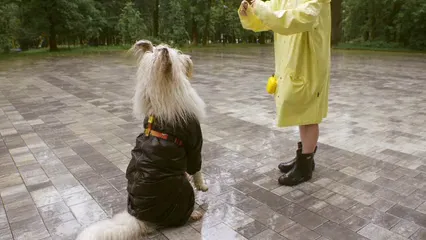
Understanding Dog Training
The Importance of Training
Dog training is vital for every pooch, whether they are a sprightly puppy or a wise old soul. Why? Because training prevents behavioral issues and boosts your dog’s quality of life. A well-trained dog is happier and healthier. They feel secure when they understand communication from their humans.
Training can also enhance social interactions. A dog that obeys commands is less likely to engage in unwanted behaviors, like barking or jumping. This means more enjoyable outings and quality time together. Plus, it builds trust and respect between you and your furry friend.
When to Start Training
Timing is everything, especially when it comes to dog training. Start as early as eight weeks old. Puppies are like sponges; they absorb everything quickly. Early socialization is also essential. Exposing them to various environments, people, and other animals helps them grow into well-adjusted adults.
But don’t worry if your dog is older. Training should be a lifelong journey. Regularly revisiting commands keeps your dog mentally stimulated. Remember, consistency is key. Make training a part of your daily routine, and you’ll see fantastic results over time!
In summary, get ready to embark on an exciting training adventure with your dog. With patience and practice, your pup will be the star of the neighborhood!

Training Techniques
Positive Reinforcement
Positive reinforcement is the golden rule of dog training. It involves rewarding desirable behavior to encourage its repetition. Think of it as a “good job!” sticker for your pup. When they sit, stay, or come, shower them with treats, praise, or playtime—whatever gets their tail wagging!
For instance, if your dog sits on command, immediately reward them with a small treat. This creates a connection in their mind between the action and the reward. Your dog will learn that good behavior brings good things. High-value treats, like freeze-dried liver or their favorite toy, can be especially motivating. Remember, a happy pup is a well-trained pup!
To make training even more effective, consider using dog training treats. They can really spice up the training sessions and keep your pup interested and motivated!
For more on how to effectively reward your dog during training, check out this article on effective positive reinforcement techniques for stubborn dogs.
Consistency and Patience
Consistency is key in dog training. Use the same commands and signals every time. If you say “sit” one day and “down” the next, your dog will be confused. Keep it simple and stick to clear, concise commands.
Patience is just as important. Each dog learns at their own pace. Some may nail “sit” in one session, while others might take a week. Celebrate small victories, and don’t lose heart if progress seems slow. If your pup struggles, break the command down into smaller steps. Training shouldn’t feel like a chore; it should be fun for both of you!
And speaking of making it fun, why not try using a dog training clicker? It’s a great tool for marking good behavior and can enhance communication between you and your pup!
Training Environment
The training environment plays a huge role in your dog’s success. Choose a quiet, distraction-free space to start. A serene setting helps your pup focus on you and the task at hand.
As your dog becomes more confident, gradually introduce distractions. This could mean training in a park instead of your living room. Start with minimal distractions and increase them over time. The goal is to help your dog learn to obey commands, no matter the environment. A well-trained dog can handle the hustle and bustle of a busy street or a crowded dog park!
To keep your pup comfortable during training sessions, consider using a dog training mat. It can provide a designated space for your dog to focus on their training!
1. Sit
Why It’s Important: The “sit” command is a game changer for impulse control. By teaching your dog to sit, you help them learn to pause before acting. This is crucial in everyday situations, like waiting at the door or for their meal. A well-timed sit can prevent jumping on guests or lunging at distractions. Plus, it sets the stage for other commands!
How to Teach:
- Begin with your dog standing. Hold a treat close to their nose.
- Slowly lift the treat above their head, encouraging them to look up. Their bottom will naturally lower.
- As soon as their rear hits the ground, say “sit” and reward them with the treat.
- Repeat this process, gradually introducing the command before the action.
- Practice in short sessions, always rewarding success. Consistency is key!

2. Stay
Why It’s Important: The “stay” command is crucial for your dog’s safety. It ensures they remain put during potentially dangerous situations, like when the front door opens or while you prepare their food. A well-trained stay can also help during outings, preventing them from running into traffic.
How to Teach:
- Ask your dog to sit. Use a calm voice and a hand signal with your palm facing them.
- Step back and say “stay.” If they hold their position, return and reward them.
- Start with short distances and durations, gradually increasing as they improve.
- If they break the stay, calmly guide them back to the position and try again.
- Always reward success and make it a positive experience.

3. Come
Why It’s Important: The “come” command can be a lifesaver. It’s your tool for calling your dog back to you, especially in risky situations. Whether they’re chasing a squirrel or wandering too close to a road, a reliable recall can prevent accidents and keep your furry friend safe.
How to Teach:
- Start indoors with a leash on your dog. Say “come” enthusiastically while gently pulling the leash toward you.
- When they reach you, reward them with treats and praise.
- Gradually increase distance and distractions as they learn.
- Practice this command in different areas, always keeping it positive.
- Never call your dog to punish them; this creates a negative association.

4. Down
Why It’s Important: Teaching your dog to “down” is all about promoting calmness. This command helps settle an excitable pup, making it easier for them to relax in various situations. A well-timed down can diffuse tension in a busy environment or help your dog focus.
How to Teach:
- Start with your dog in a sitting position. Hold a treat near their nose.
- Slowly lower the treat towards the floor. As they follow the treat, they’ll naturally lie down.
- Once they’re down, say “down” and reward them.
- Repeat this process, gradually using just the verbal cue.
- Keep sessions short and fun, rewarding every success!

5. Leave It
Why It’s Important: The “leave it” command is essential for preventing your dog from picking up harmful items or engaging in undesirable behaviors. This command can save your dog from choking hazards or eating something toxic. It’s a must for any responsible dog owner.
How to Teach:
- Start with two treats: one low-value and one high-value. Show your dog the low-value treat while keeping the high-value treat hidden.
- When they reach for the low-value treat, say “leave it” and close your hand around it.
- When they ignore it, reward them with the high-value treat.
- Gradually increase the challenge by placing the low-value treat on the floor.
- Always reward them for ignoring the temptation!

6. Off
Why It’s Important: Teaching your dog the “off” command is essential for setting boundaries. It helps prevent unwanted jumping on people or furniture. Imagine your guests arriving, and your pup decides to leap into their arms like a furry acrobat! Not ideal, right? This command ensures your dog understands when it’s time to keep all four paws on the ground. It promotes good manners and helps your dog learn their place in social situations.
How to Teach:
- Begin by having your dog on a leash. Wait until they jump on someone or the furniture.
- Calmly say “off” in a firm but friendly voice.
- Gently guide your dog back to the ground using the leash.
- As soon as their paws touch the floor, reward them with a treat and praise.
- Repeat this process multiple times, gradually increasing the difficulty.
- Practice in different environments with various distractions to reinforce the command.
- Always reward compliance, making sure your dog associates the command with positive outcomes.

Additional Commands
If space allows, consider teaching these useful commands:
- Heel: This command ensures your dog walks politely beside you. Use treats to encourage them to stay close while you walk.
- Wait: Teaching your dog to “wait” can prevent them from rushing out doors or into dangerous situations. Start with short waits and gradually increase the duration.
- Drop It: This command is a lifesaver for retrieving items your dog shouldn’t have. Use a toy and treat to encourage them to release whatever they’re holding.

Common Training Mistakes to Avoid
Training your dog can be a challenging yet rewarding experience. However, common pitfalls can derail your progress. One of the biggest mistakes is inconsistency. If you use different commands or signals, confusion is inevitable. Stick to the same commands consistently. This clarity helps your dog learn faster.
Negative reinforcement is another no-no. Yelling or using harsh corrections can harm your bond with your dog. Instead, focus on positive reinforcement. Reward good behavior immediately with treats, praise, or playtime. This encourages your dog to repeat those behaviors.
Another mistake is impatience. Training takes time, and every dog learns at their own pace. Set realistic expectations and celebrate small victories. If your dog struggles, break the command into smaller steps.
Lastly, avoid lengthy training sessions. Dogs have short attention spans. Keep sessions brief, around 5-10 minutes, and ensure they end on a positive note. This keeps your dog engaged and eager for more training.

By steering clear of these mistakes, you’ll create a more effective and enjoyable training experience for both you and your furry friend. Remember, training is about building a strong bond based on trust and understanding!
Conclusion
In this article, we’ve covered the essentials of teaching your dog basic obedience commands. Starting with commands like “sit,” “stay,” and “come” lays a solid foundation for a well-behaved dog. Remember, consistent training is key. It not only helps your dog understand your expectations but also strengthens the bond between you two.
Building a positive relationship with your furry friend is crucial. Use positive reinforcement, like treats and praise, to motivate them during training. Keep sessions short and enjoyable, and always end on a high note.
And don’t forget to equip yourself with a dog training leash to ensure you have good control during training sessions!
Patience is your best friend. Each dog learns at their own pace, so don’t rush the process. Enjoy the journey! Celebrate small victories, and soon you’ll have a well-mannered companion by your side. Happy training!

FAQs

Please let us know what you think about our content by leaving a comment down below!
Thank you for reading till here 🙂
For your dog’s safety and comfort, consider investing in a dog safety harness. It provides security during walks and helps keep your pup safe while you train!

Additionally, a dog grooming kit will keep your furry friend looking sharp and feeling comfortable as they learn their commands!
All images from Pexels

